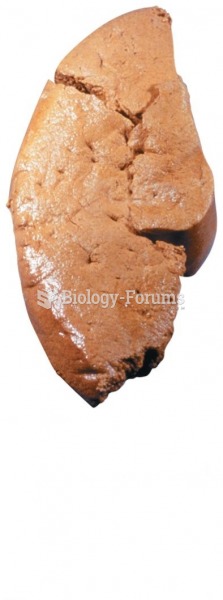|
|
|
Human neurons are so small that they require a microscope in order to be seen. However, some neurons can be up to 3 feet long, such as those that extend from the spinal cord to the toes.
The U.S. Preventive Services Task Force recommends that all women age 65 years of age or older should be screened with bone densitometry.
Eat fiber! A diet high in fiber can help lower cholesterol levels by as much as 10%.
The top 10 most important tips that will help you grow old gracefully include (1) quit smoking, (2) keep your weight down, (3) take supplements, (4) skip a meal each day or fast 1 day per week, (5) get a pet, (6) get medical help for chronic pain, (7) walk regularly, (8) reduce arguments, (9) put live plants in your living space, and (10) do some weight training.
Chronic necrotizing aspergillosis has a slowly progressive process that, unlike invasive aspergillosis, does not spread to other organ systems or the blood vessels. It most often affects middle-aged and elderly individuals, spreading to surrounding tissue in the lungs. The disease often does not respond to conventionally successful treatments, and requires individualized therapies in order to keep it from becoming life-threatening.
 Thumb web–forearm stimulation. Using the thumb and finger of your left hand, squeeze the webbing ...
Thumb web–forearm stimulation. Using the thumb and finger of your left hand, squeeze the webbing ...
 Pelvic rock. Place your right hand over the recipient’s left hip bone. Place your left hand over ...
Pelvic rock. Place your right hand over the recipient’s left hip bone. Place your left hand over ...





